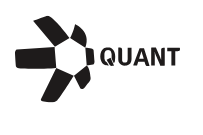Jul
2023
Real estate tokenisation: Where bricks meet blockchain
DIY Investor
19 July 2023
 The concept of turning bricks and mortar into digital tokens may be in its infancy but its growing at a rapid pace – delivering great transparency, efficiency and liquidity. Regulatory and technical challenges ahead though: Guest post by Andrew Carrier
The concept of turning bricks and mortar into digital tokens may be in its infancy but its growing at a rapid pace – delivering great transparency, efficiency and liquidity. Regulatory and technical challenges ahead though: Guest post by Andrew Carrier
Tokenisation of property usually means turning the asset’s rights into digital tokens, which can be traded online.
Most of us are already familiar with it. We store money digitally, rather than as physical notes or coins. It makes it easier to do business, especially online or across borders. Soon, our central bank currency will even move into the realms of crypto. Real estate is going through a similar journey with tokenisation.
Today, real estate tokenisation is in its infancy. But the market is growing at a rapid 19.8% CAGR each year. Experts are anticipating a boom. Boston Consulting Group, for example, predicts $3.2 trillion of home equity will be held in tokens by 2030.
Tokenisation as a liquidity stream and investment tool
There are different ways to invest in tokenised real estate:
- Investors can buy shares of the property with fractionalisation, just like with a real estate investment trust.
- The right to a share of the property’s profits could be traded too. For example, for investors who want a cut of the rental yields, or gains from flipping a property. In places like the US, where renovating and selling properties is often a freelance affair, this opens a whole universe of opportunities. The buy-to-flip market could be about to get disrupted.
- Lenders also use tokenised assets as collateral for a loan. Around $4 billion of these loans have already been conducted with tokenisation, with Mexico, Kenya and Nigeria leading the way.
There are many other ways tokenisation is used to enhance liquidity or make investing more efficient. Some of our clients tokenise fractional shares of valuable art. And we’ve heard of other use cases where experts even sell personal meetings with tokens.
One of the most appealing aspects for property investors is the enhanced transparency. Ledger technology stores useful information for potential buyers. This could include the energy rating of a property, number of years on the lease, or what kind of wood the floor is made from. This information – sometimes known as “oracles” – can further reduce costs, admin, and other headaches for property investors. This can help to dramatically reduce admin – the most stressful part of the process for 28% of home buyers.
Overcoming regulatory and standardisation hurdles
One of the benefits of real estate tokenisation is to open the market globally. But regulatory hiccups can get in the way.
Legislators are racing, but it’s a constantly-moving environment. Some are quicker than others. Hong Kong, for example, has a booming structure. Other parts of Asia, like Singapore and Japan are also catching up with robust regulations. Switzerland, Luxembourg, and Liechtenstein have acted quickly too. The UK is on its way, but it’s not there yet. The fragmented laws expose investors to risks, with serious potential legal ramifications.
“One of the most appealing aspects for property investors is the enhanced transparency.”
The public market is the most prone to scammers and bugs. This is why, at Quant, we recommend private blockchains, with appropriate contracts and rules in place.
But it’s not just the laws which are fragmented. As this is such an early market, there are also different blockchains, standards, and ways of doing things. According to The World Bank, the “multiple standards and functionalities” are an “obstacle”. As the market finds its feet. Some blockchains and ways of doing things will also become outdated, replaced, or may never go mainstream.
That’s why we’ve made interoperability and adaptability key elements of our DNA. With Overledger, for example, moving your token to another blockchain is painless and hassle-free.
Already, we’re seeing some common standards emerging. One example is the ISO/TC 307, which has been signed by more than 50 countries. Institutions like the World Economic Forum are increasingly looking into the standards and interoperability of distributed ledger networks. But there is much more work to be done. For example, there are even different standards between fungible tokens and non-fungible tokens.
Tokenised property moves into the mainstream
Today, 57% of people have heard about crypto, making it the second most famous asset. However, 46% do not trust it. This is probably because of a range of scams and scandals over the years. Tokenising real estate should not be part of this world.
For maximum security, we combine private blockchains with the same technology that central banks and national payment firms use.
Little by little, tokens and cryptocurrency are beginning to separate in people’s minds too. Major institutions are also shifting their stance. The World Bank, for example, recently published a report about tokenising infrastructure projects, indicating serious interest. And tokens have long been an integral part of the fight against the climate crisis, as governments shape up their tokenised carbon credit scheme.
How Quant can help
- Learn about Overledger, the enterprise standard for building on blockchain >
- Find out how to tokenise using Overledger >
Alternative investments Commentary » Alternative investments Latest » Brokers Commentary » Commentary » Latest

Leave a Reply
You must be logged in to post a comment.